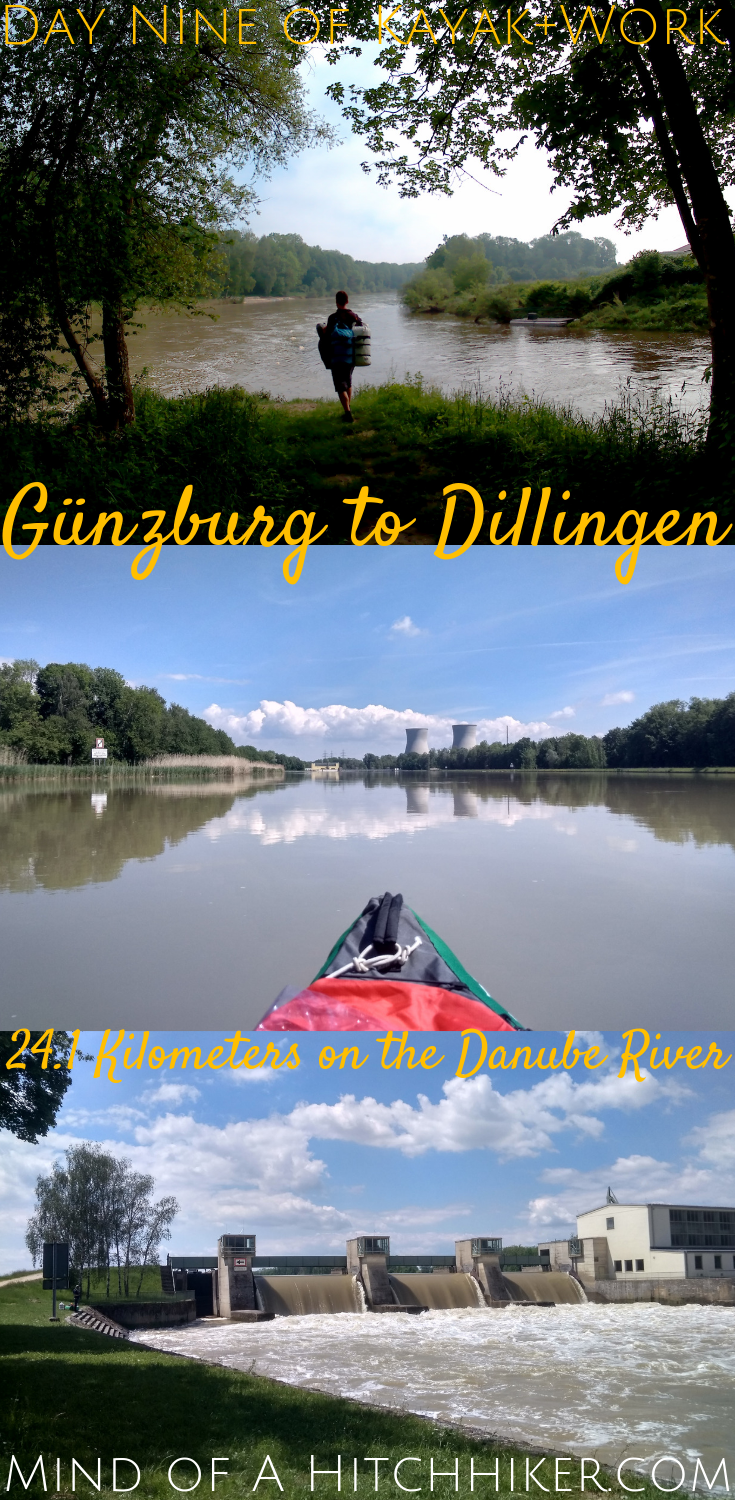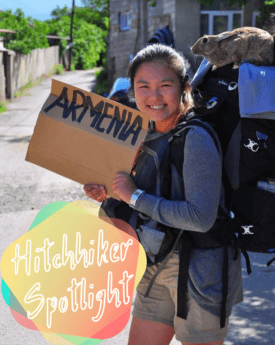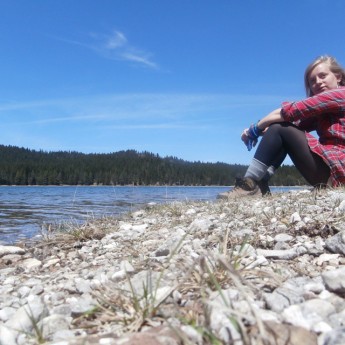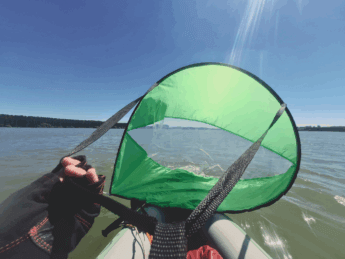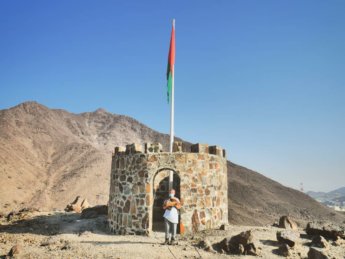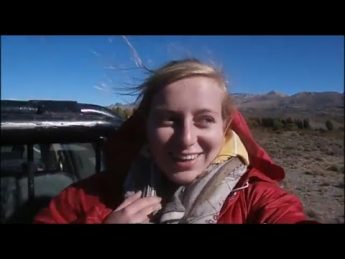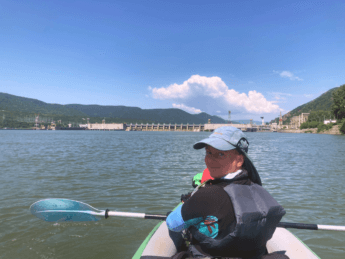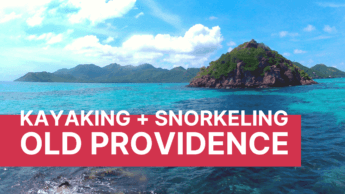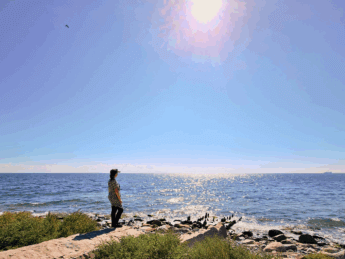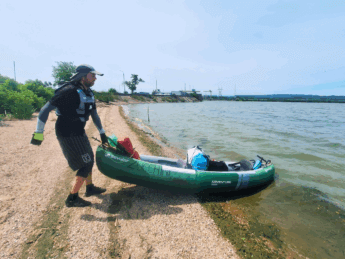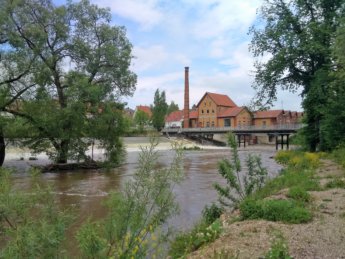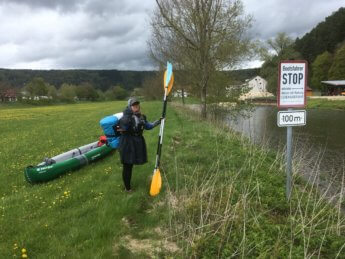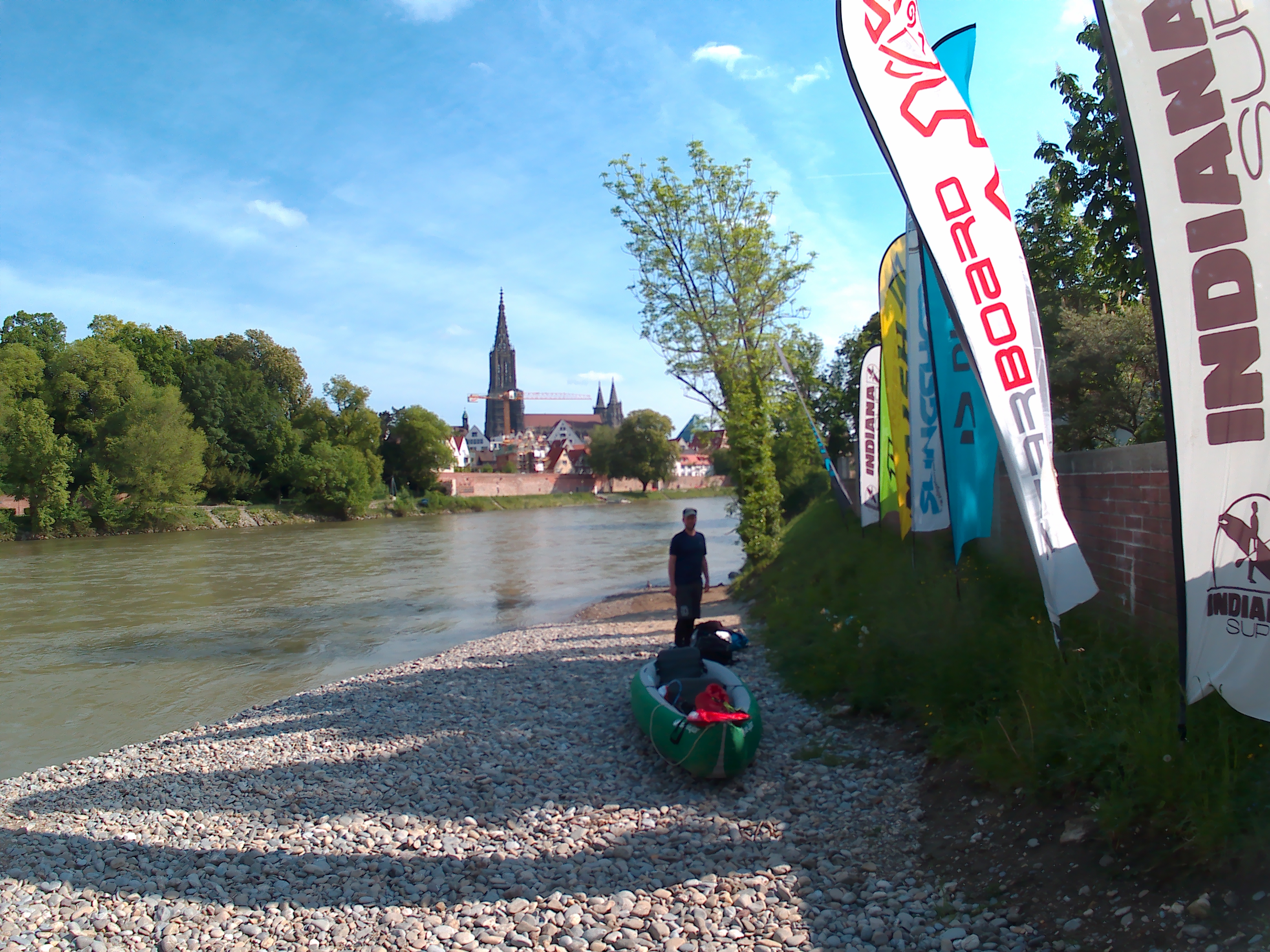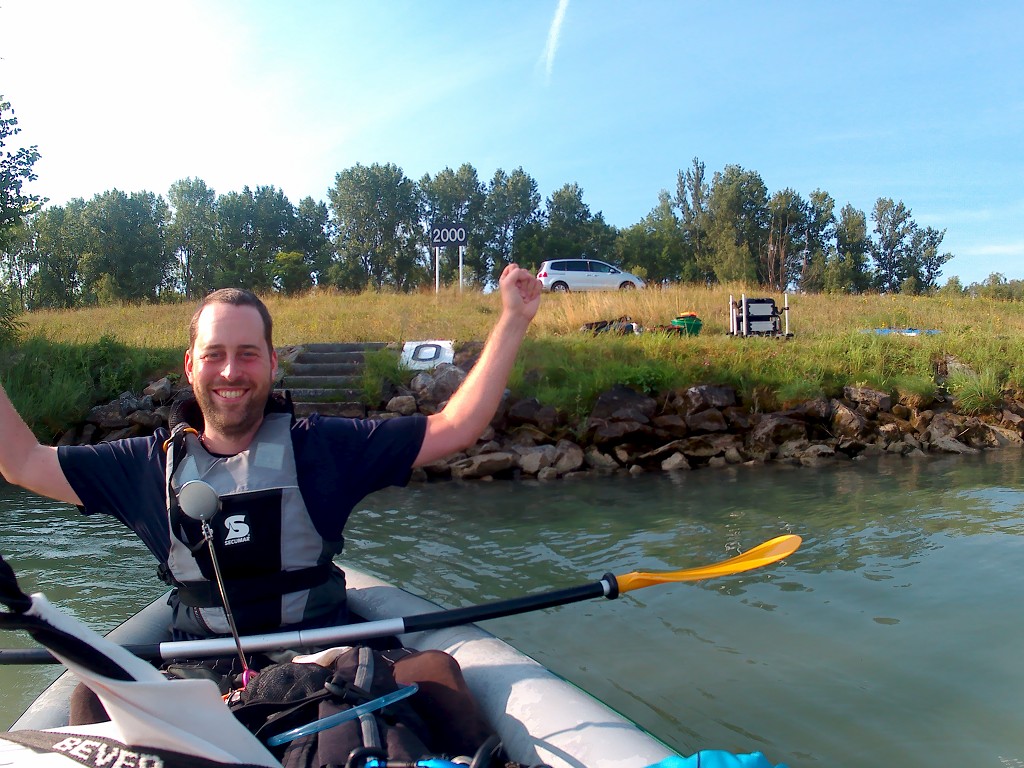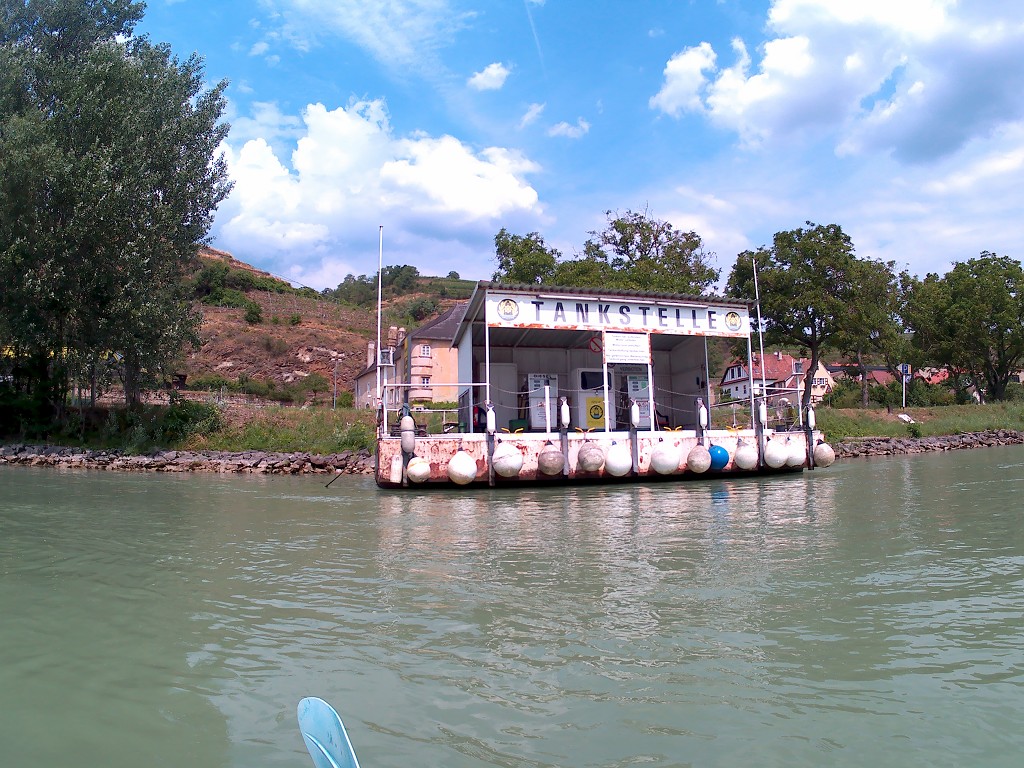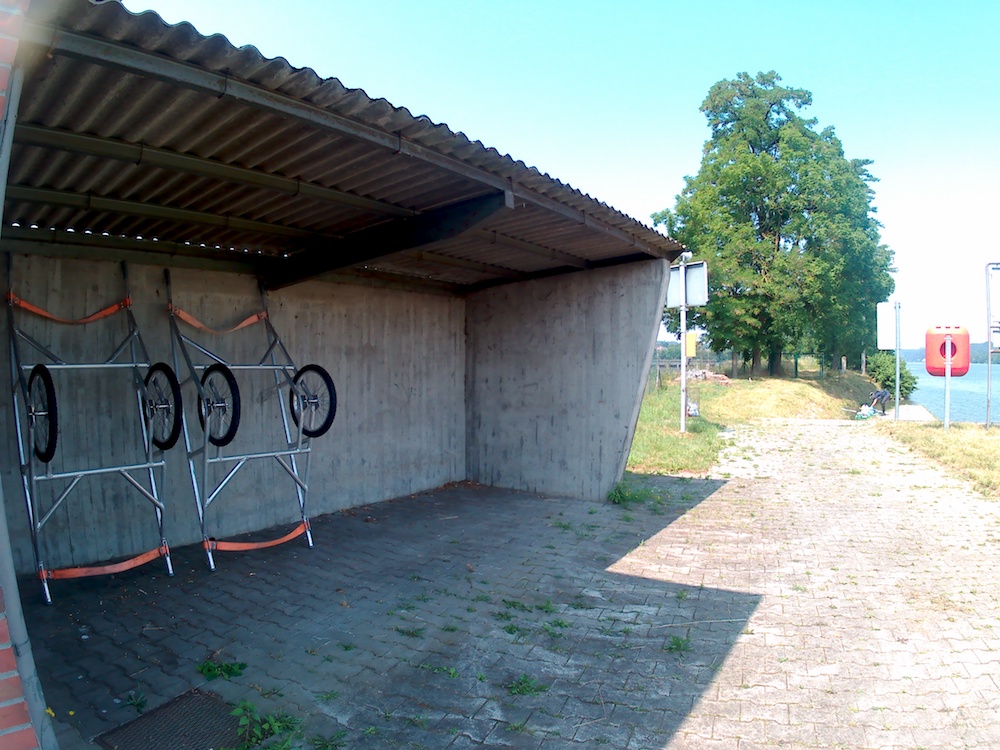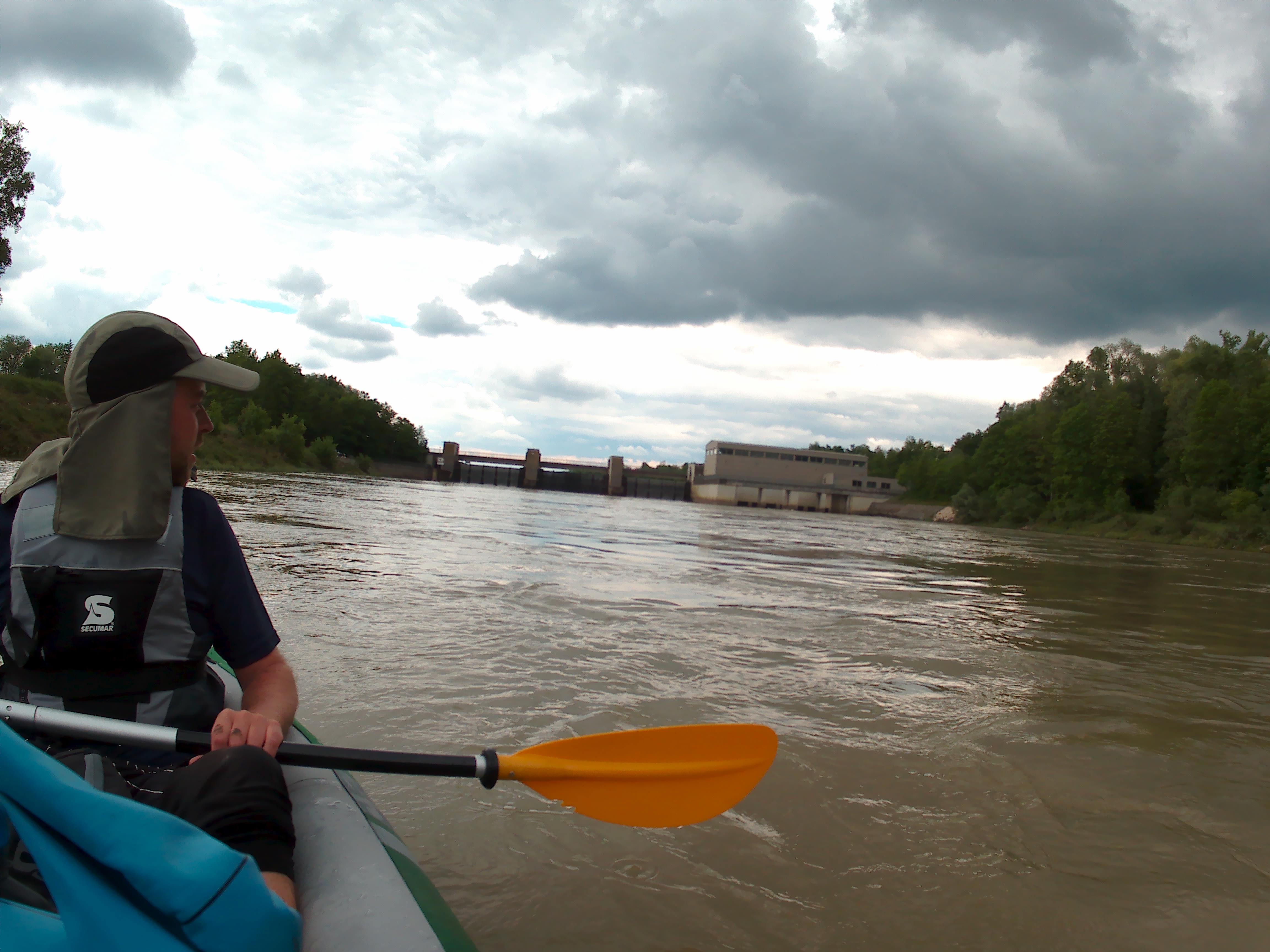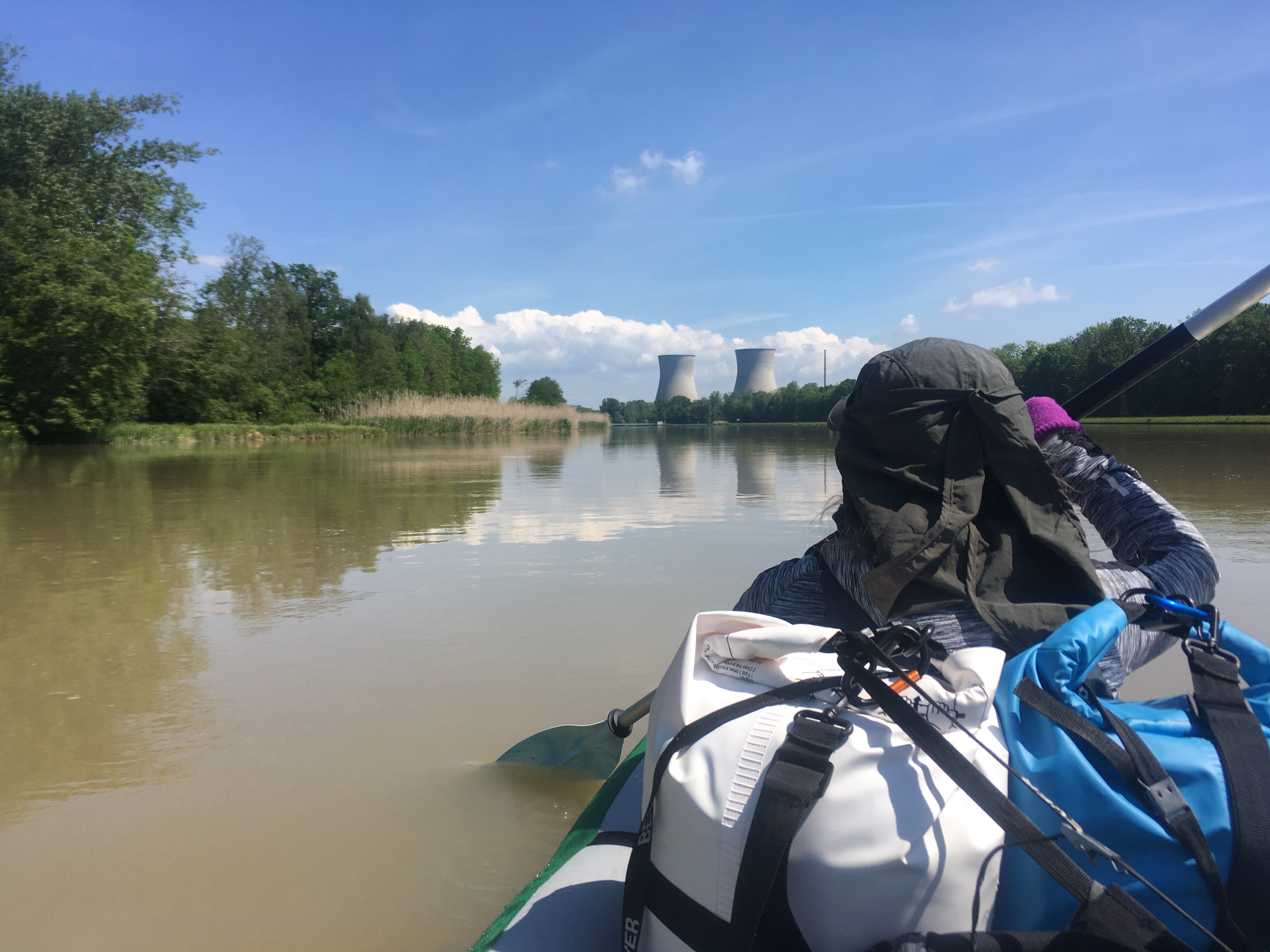
Events in this article happened on the 30th of May, 2019, which was also Ascension day. We paddled in our inflatable canoe from Günzburg to Dillingen an der Donau, a distance of about 24 kilometers. Both towns lie in Bavaria in Germany. In Germany, Ascension day is a public holiday and they celebrate father’s day on this same day. Father’s day is actually more generally ‘men’s day’, which means that a lot of groups of men go outside to drink and revel in shitty activities like fishing. In Dillingen an der Donau, we finally went camping for the first time on this trip. You can also read about the background of this trip.
Want to travel the (entire) Danube River in an adventurous way? Join our Facebook group Danube River Source to Sea: Kayak / Canoe / Bike / Hike / Sail to find your community
Our Time in Günzburg (27th – 30th of May)
We stayed in Günzburg for three nights at hotel Goldene Traube (golden grapes). Günzburg hosts the German version of Legoland. That’s what most people know it for. That means that Günzburg mostly attracts families with young children. Our hotel’s breakfast room was indeed full of kids and tired parents who let their kids fall off chairs and onto their heads because they forgot to pay attention for half a second. Lots of screaming, too.
We decided to stay three nights instead of two because the weather forecast told us there would be a week of sunshine starting on the 30th of May. Our next stop – a village called Dillingen an der Donau – had a campsite right next to the river. Camping out at night was the one thing we hadn’t done yet on this trip. We hadn’t even opened the white dry bag since I packed it back at Jonas’ mother’s house up north. Not being miserable while it rains on our tent was a prerequisite for our first camping night on this kayak trip. It’s self-care.
We could both work for two days from the hotel in Günzburg, which had an excellent desk and okayish WiFi. One day we walked along the river Günz to see if we’d be able to get into the river there, but the Günz had a bit of a flooding issue. There was also the canoe club of Günzburg, but we couldn’t visit it on our exploratory hike because we could either get our (brand new) shoes wet and muddy or run across the train tracks. We did neither and kept the mystery of where we’d launch from for the day of departure.
Leaving Günzburg for Dillingen an der Donau
We prepared some sandwiches at breakfast, finished up packing, and left the hotel. I decided to wear my water shoes and neoprene socks already from the hotel. This way I could walk through the slippery sludge under the bridge without changing shoes. Jonas kept on his normal shoes for the short hike down the old town and across the Günz. He had to change them when we got to the muddy part.
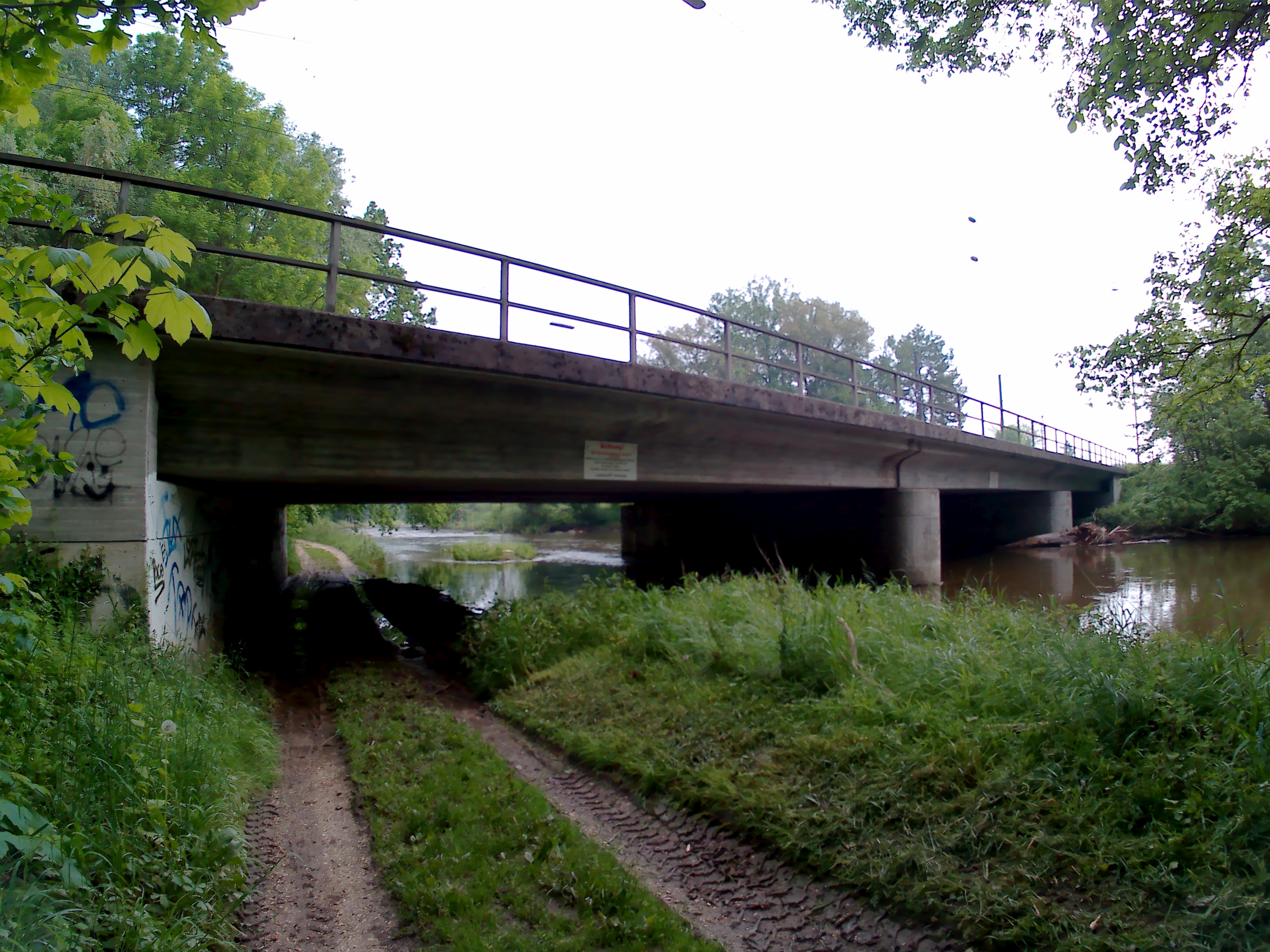

While still slippery, most of the water under the bridge had gone away. Once we were ready, I went under the bridge first supporting myself with the graffitied wall. Jonas followed unsupported through the car tracks. We made it across quite easily and then ran into a young man with suspiciously clean shoes who spotted our paddles. He asked us “Are you paddling? Isn’t it dangerous now?” and I responded in English that it’s all good. He wished us a good trip.
The Günz has this funny area here for white water paddlers, I guess. It has a kind of slalom track with gates hanging above the river for two people to compete. This part is full of tiny rapids (represented as weirs on the OSM map). It looks like a lot of fun if we had the right kind of boat.

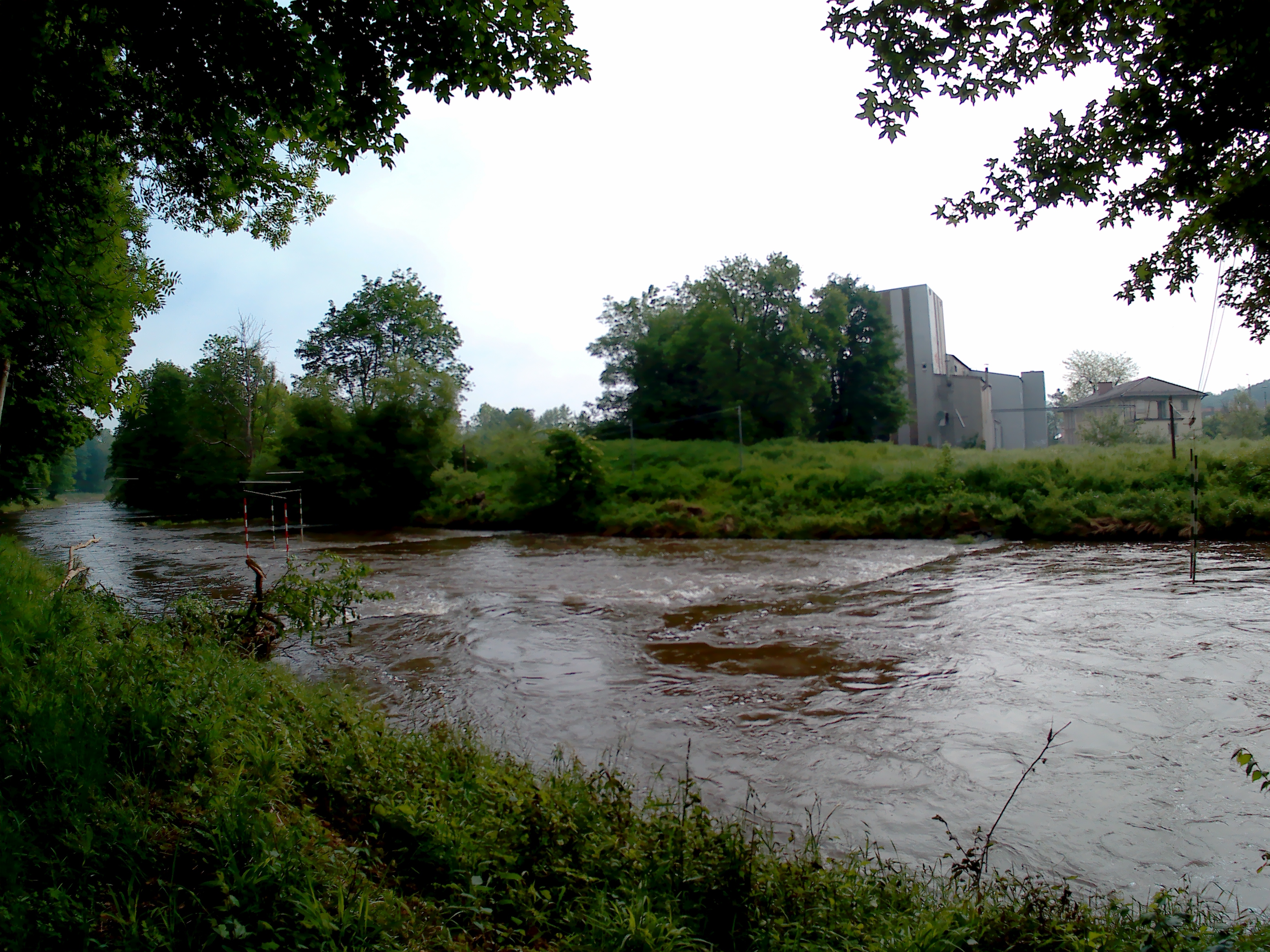
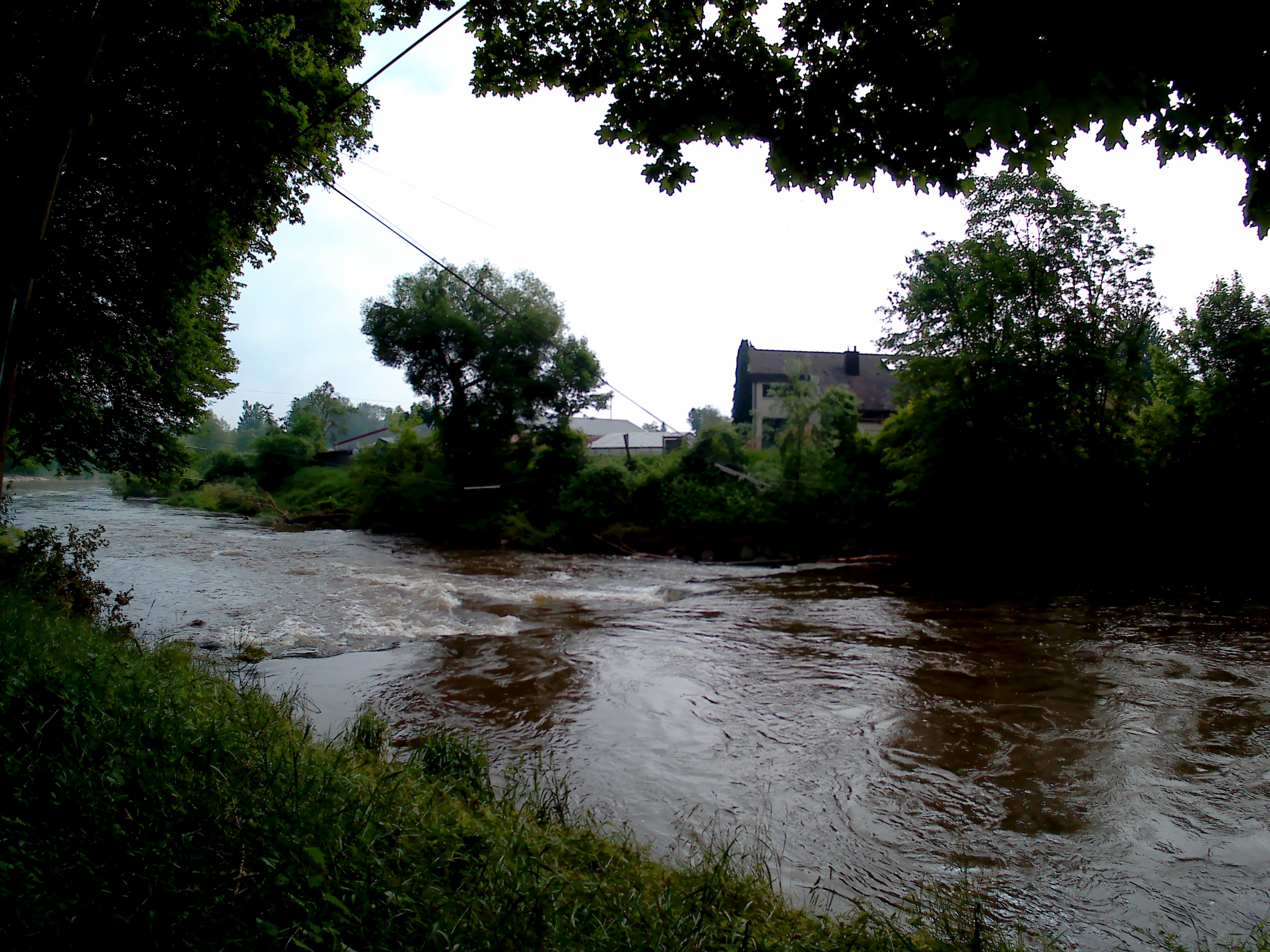
We first visited the confluence of the Günz and the Danube. There was a spot to get in there, but the canoe club was also very close by. We reasoned that there must be a better launch spot at the club – and there was! Some humble stairs descended into the water next to a quiet clubhouse. We unpacked our stuff and began the departure preparations.
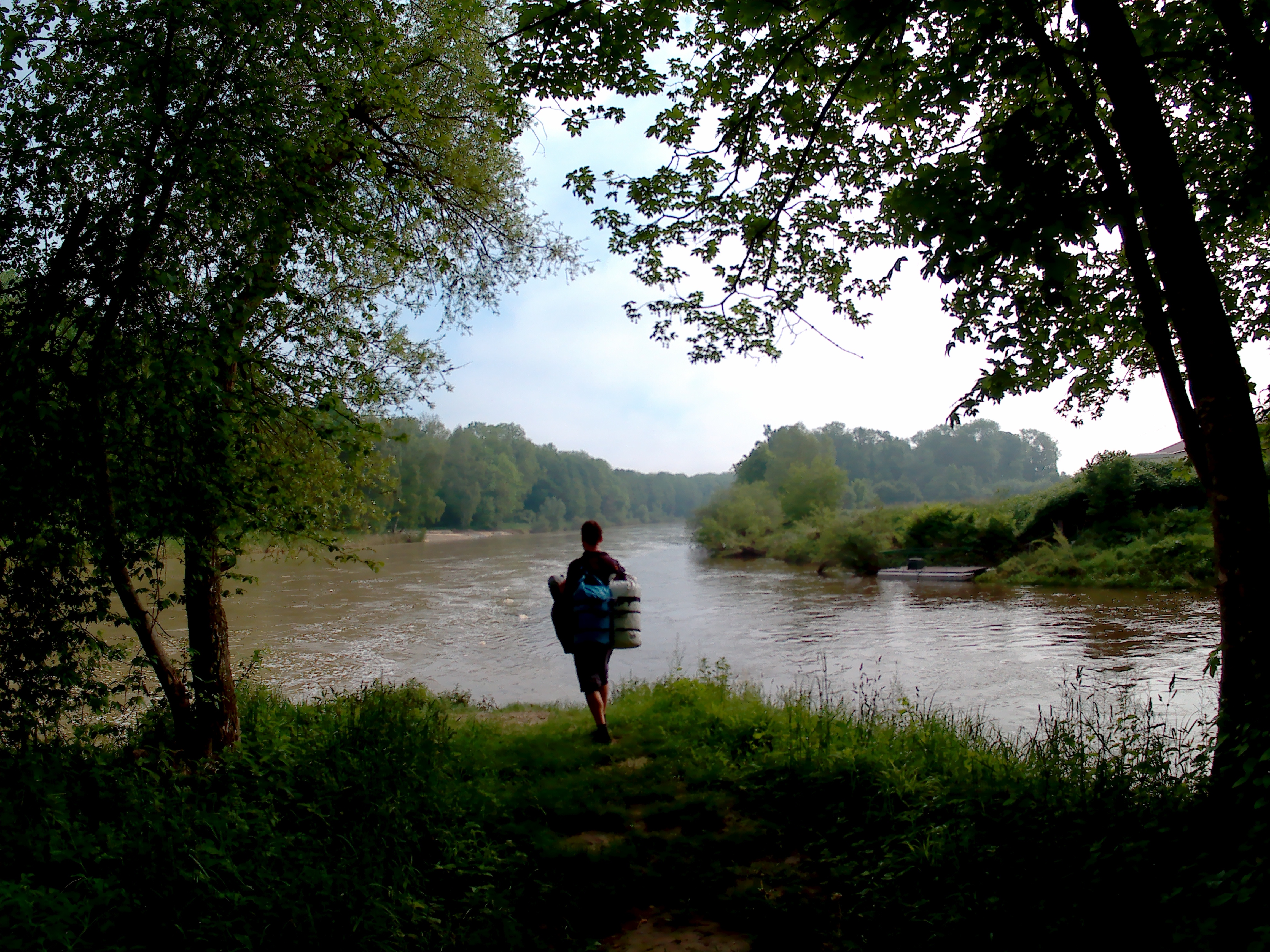
Today, we wanted to try switching positions in the boat. Jonas would sit in the front and be more responsible for speed, and I’d sit in the back and control our direction. Since he’s tall and long-legged, we needed to rethink the whole what-goes-where of the canoe.

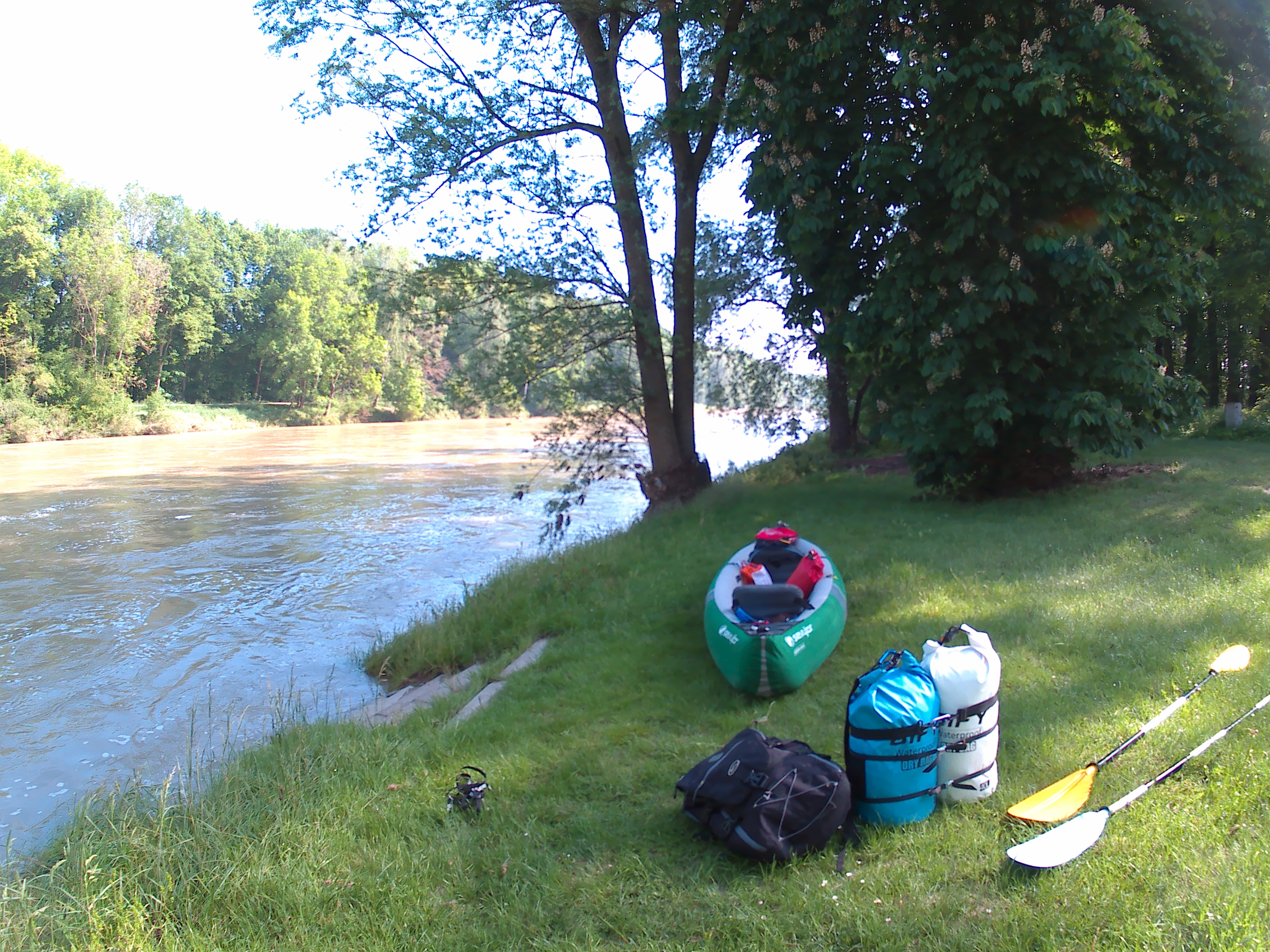

A Different Perspective
We paddled away from Günzburg at 10:10 – pretty late for our usual selves. We first passed the confluence of the Günz with the Danube. The nearby Wasserkraftwerk (hydroelectric power plant) Günzburg and the elevated water levels propelled us at a good speed forward from behind. Now I had to do the steering. It was really nice for me since my biggest frustration for sitting at the front was that if Jonas didn’t help me maintain direction – for example when he’s eating – I’d have to put in a lot of work and energy to correct our course. Now it would only take me one stroke to change our entire course. And yes, we’re still not using the fin in the canoe, which makes it a bit harder to go straight.



Jonas enjoyed the uninterrupted view from the front seat. I kind of realized that he just looks at the back of my head all day long. We paddled past the Reisenberg tower and onward at a confident speed. Then, the cooling towers of the Kernkraftwerk (nuclear power plant) Gundremmingen appeared on the horizon behind Jonas: two majestic concrete towers of first-world energy consumption. Hyperboloid structures as accidental brutalism. A very pleasing aesthetic.
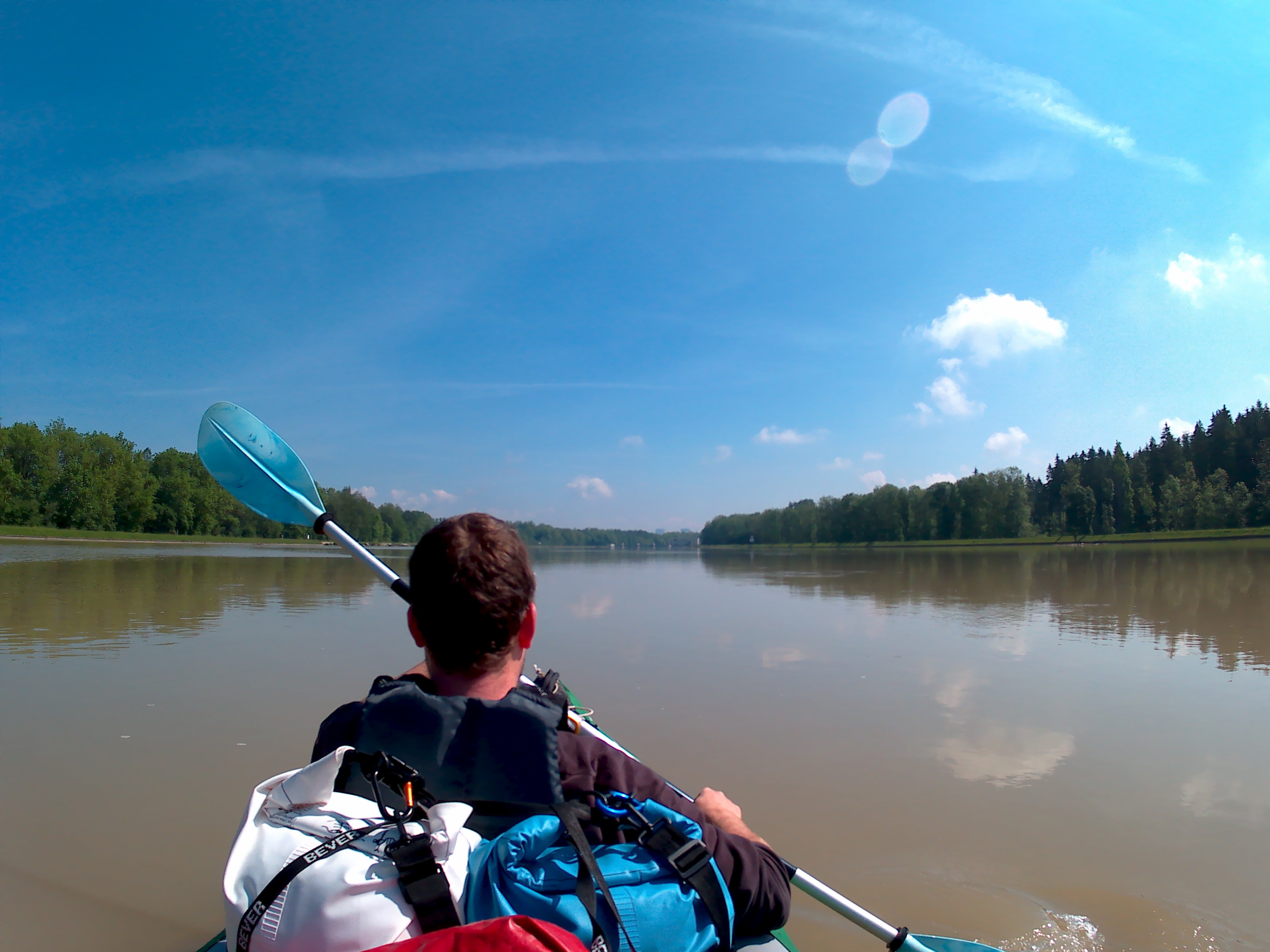
The structures disappeared behind the trees again before we reached the first hydroelectric power plant of the day in Offingen. Jonas told me his legs went stiff, and I asked him if he wanted to switch places immediately. He could hold it out until our first portage at the dam. We approached the left side carefully to not get stuck in shallow waters. We arrived there at 11:00 and reentered the water at 11:10, very quick considering we had to move quite some stuff to switch positions.

The Radlertankstelle and the Public Holiday
Behind the Offingen dam, the skinny river flows under a train bridge and then under the main bridge that leads across the river to the center of Offingen town. On the left side of the river is a beer garden (Biergarten) named the Radlertankstelle (cyclists’ gas station). I’d still like to one day have a break on the river shore and maybe have a drink and visit a toilet, but it was still too early with still many kilometers ahead.

The Radlertankstelle announced its presence acoustically much before the sighting. Loud big band music grew louder and a DJ yelled some stuff through a microphone. We take signs on bridges very seriously, so we paddled into the direction of the sign to read it. “← Biergarten” it read. Very crucial information (in Bavaria).

We spotted the typical beer garden tables and lots of men and parked bicycles. Some were wearing their Lederhosen. They had golden-yellow refreshments and salty snacks. It looked like a lot of fun, but also a lot of potential trouble. Jonas repeated that it was Ascension day, which is a public holiday, but also father’s day. As we floated past the (decent-looking) landing spot for kayaks, he told me the story of how father’s day in Germany is more generally “men’s day”, because being a father doesn’t seem to be a requirement to participate in its events.
What German men do on this day is basically go out with their friends and drink in public. They pull a Bollerwagen (toy wagon) filled with beer and stronger spirits to their shenanigan spot to do ‘manly activities’. Maybe they’ll go fishing, organize a barbecue, get a bad sunburn “because sunscreen is for sissies”, or shit on (their) women and be far the fuck away from their children, like a true deadbeat dad. Who knows. Jonas has never participated in this cultural artifact, so he couldn’t really lift the veil either.
Anyway, it was an incredibly warm and sunny day, which always adds an extra layer of complications to any public holiday. It was also a Thursday, so we expected many people to take a bridging day for the weekend to complete their bender. Whatever it is, I was happy to be in the middle of the river and a safe distance away from whatever toxic masculinity and insecurities they’d like to project onto us.
I really hate public holidays.
Our Established Routine
The distance to the next dam (Wasserkraftwerk Gundelfingen) was quite short. The river became quite predictable with a distance between the dams of about 6 to 12 kilometers. And at the dams, it was always the same drill: the river gets wider and slows down to a halt, some warning signs announce whether you need to get out on the left or on the right, the lock is out of order or it’s not yet the season, there are some parallel stairs of your choice and maybe a ramp, and you can put your boat back in on the other side within 100 to 200 meters.
For variety, we had a pretty spectacular view of the cooling towers up ahead.
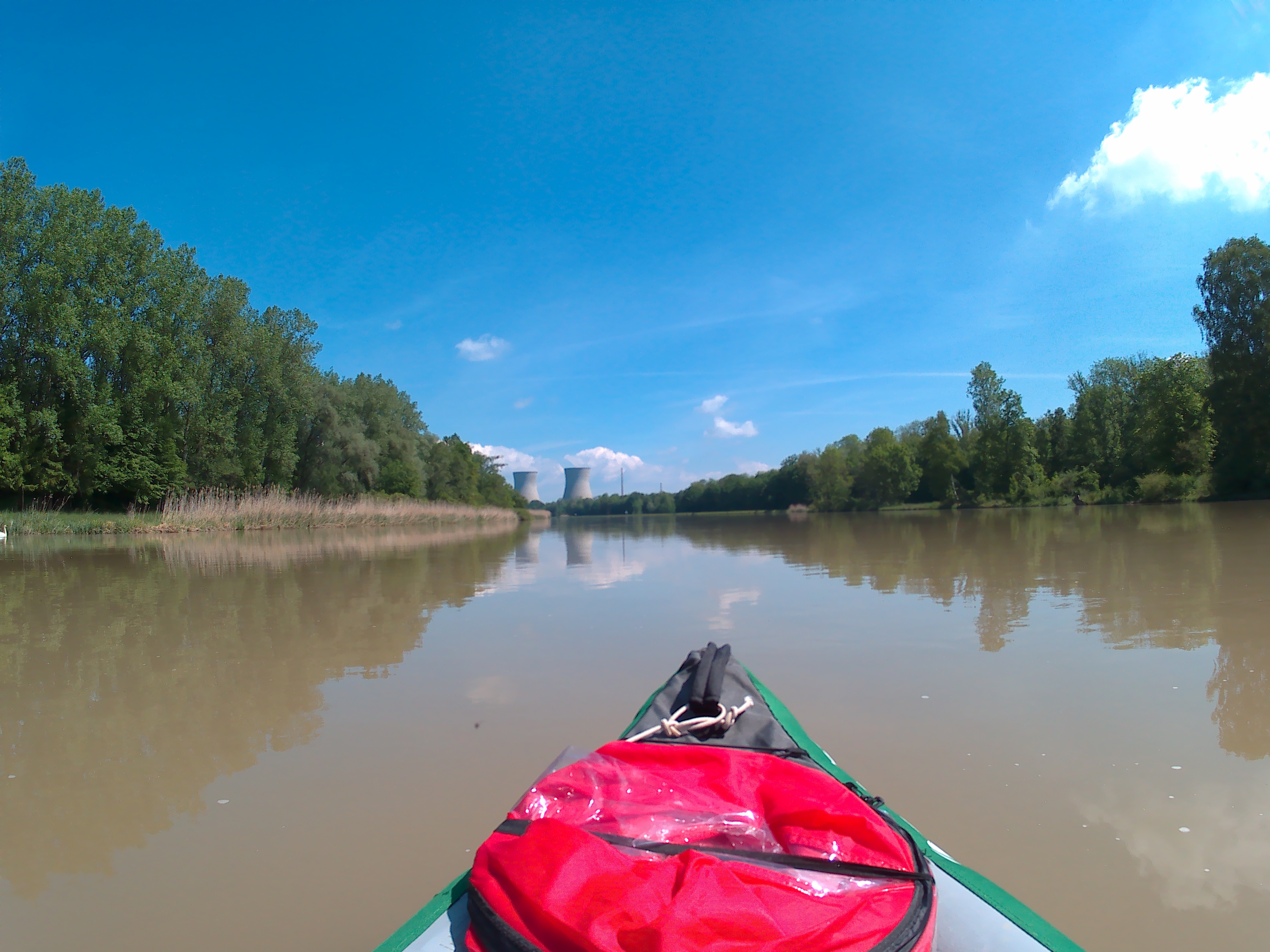

I land the boat, get out first, and put my paddle on the shore. I move the boat to help Jonas get out, who grabs the CabinMAX on his first round and the dry bags on the second round. We lift the boat out of the water and put it on the shore. I put on the CabinMAX and Jonas takes the dry bags. We put the paddles inside the boat. I grab the back of the canoe and Jonas the front. We walk to the reentry point with a few short stops. We put the bags back into the boat and strap everything in. Jonas goes into the boat first, I second. And then we paddle real hard against the back current to get going again.
It’s a dance.
Maybe it’s not a very graceful dance, but a dance nonetheless.
I remember that it used to be much more physically and mentally demanding to carry the boat around, but now that it’s a routine, it’s not so much effort anymore. It’s also incredibly boring and still a giant waste of time.
Gundremmingen Nuclear Power Plant
At Gundelfingen we performed this dance on the right-hand shore. Out at 11:50, back in at 12:05. Right after the dam, a canalized right-side arm of the river bends away. But don’t be fooled: this is the canal that brings cool water from the Danube to the Gundremmingen nuclear power plant and its cooling towers. We expected some big signs warning us not to paddle there, but there weren’t any to be seen.


It seems like a bunch of misplaced priorities to not protect something as controversial as a nuclear power plant from all sides. Especially in a country like Germany, where the “Atomkraft? Nein danke” stickers are abundant and the threat of terrorism persists, it seems weird that two people in a canoe can approach so closely and possibly even enter the cooling canal without warning. Like, of all the nanny-state things you could do, you forgot to put a sign there?
In our research about this particular plant, we did find out that only block C is still in use. We didn’t see any vapor clouds coming from tower C when we paddled past it. Their website is also happy to inform us that, paraphrasing, nuclear energy is good as an addition to renewable energy as their production varies, and that nuclear energy is cleaner than coal. Today, it seems that renewable wins, as the hydroelectric plants all spill over their extra water via the weirs.
The Third Hydroelectric Power Plant
Between dam two and three, we tried our best to keep a steady pace. I’ve been practicing my stroke rhythm ever since that day we had to paddle to Neu-Ulm. Right after the dams, we have some current, but within two and three kilometers before the next dam, the water becomes really stagnant. That’s where paddling in a rhythm really helps to get through it. To do this, I take the heavier, longer and larger blue paddle because it makes the boat less wet when I do double-sided strokes. We’ve stopped doing single-sided strokes since we constantly reach these stagnation zones before the hydroelectric dams.
Faimingen is the third Wasserkraftwerk, close to a town called Lauingen. Lauingen is the last town at the Danube before our target town Dillingen an der Donau. The artificial lake (Stausee) before is absolutely huge. We decided to not eat our sandwiches until after the third dam, so we really wanted to paddle on.
But these huge open spaces mess with the perspective; you can see the building of the hydroelectric power plant already four kilometers beforehand, but that doesn’t mean you feel like you’re getting any closer. Moreover, the wind often picks up at these spaces, and even though the forecast told us we’d have a tailwind, we actually experienced headwind. Alas, no action for our kayak sail today!

Motivated for food, I’d paddle one hundred strokes before taking a short break. Then I’d paddle another 120 or so before putting the paddle back down again for a short rest. I know this might sound not very intense for an experienced paddler, but we’ve actually been doing this trip with zero exercises beforehand. It takes quite some familiarity with the boat, the paddle, and the surroundings before a state of flow can be reached.
We portaged around the Faimingen dam at 13:10 and reentered at an unofficial spot because the water splashed a bit too wild at the stairs.
The Rapids in Lauingen and the Final Dam near Dillingen
Next up was paddling through the town of Lauingen. Jonas had done some Google Earth research beforehand, and he said it looked like there were some rapids right behind the bridge of Lauingen. This is important information for us. I still had to finish my sandwich when we saw the edge of the splashing water. I quickly put the sandwich away to focus on getting around this. We approached the bridge and decided to first get out of the boat to see if it was a drop or just some shallow and fast-moving bits.
We first tried to get out on the right side, then we paddled over to the left side. I tried to hop onto the shore, but my foot sunk very deep into some sandy mud. Highly alert to the fuckery it would take to go and check, I just stood up to look over. The water continued, there was no drop, and it all looked like the stuff we’d done before on the young Danube stretches before Neu-Ulm. I asked Jonas whether we could just go over it, and he agreed. I washed my foot in the water and got back in.
It was really no big deal and I wonder whether the improved infrastructure had made us insecure in our abilities. We passed the Lauinger row- and surf club at 13:50 and paddled on to the final hydroelectric plant. I finished my sandwich in peace and we relaxed in the boat just letting the river carry us to our destination Dillingen an der Donau.

Not totally unpredicted, a single guy in a rowboat overtook us casually as we approached the dam. He must have popped out of that rowing club in Lauingen. He doesn’t seem to be portaging around the dam and going to Donauwörth, as he approaches the dam, then calmly turns his boat around, and paddles back to Lauingen.
Wasserkraftwerk Dillingen an der Donau was only 900 meters before our campsite. We portaged around it on the right-hand side at 14:50 and reentered the river at 15:00. Five minutes later, we landed on the left-side shore at the campsite (Zeltplatz) 150 meters before the bridge. A big sign saying “Kanu Club Dillingen – Zeltplatz” welcomed us, with two parallel stairs to get out.
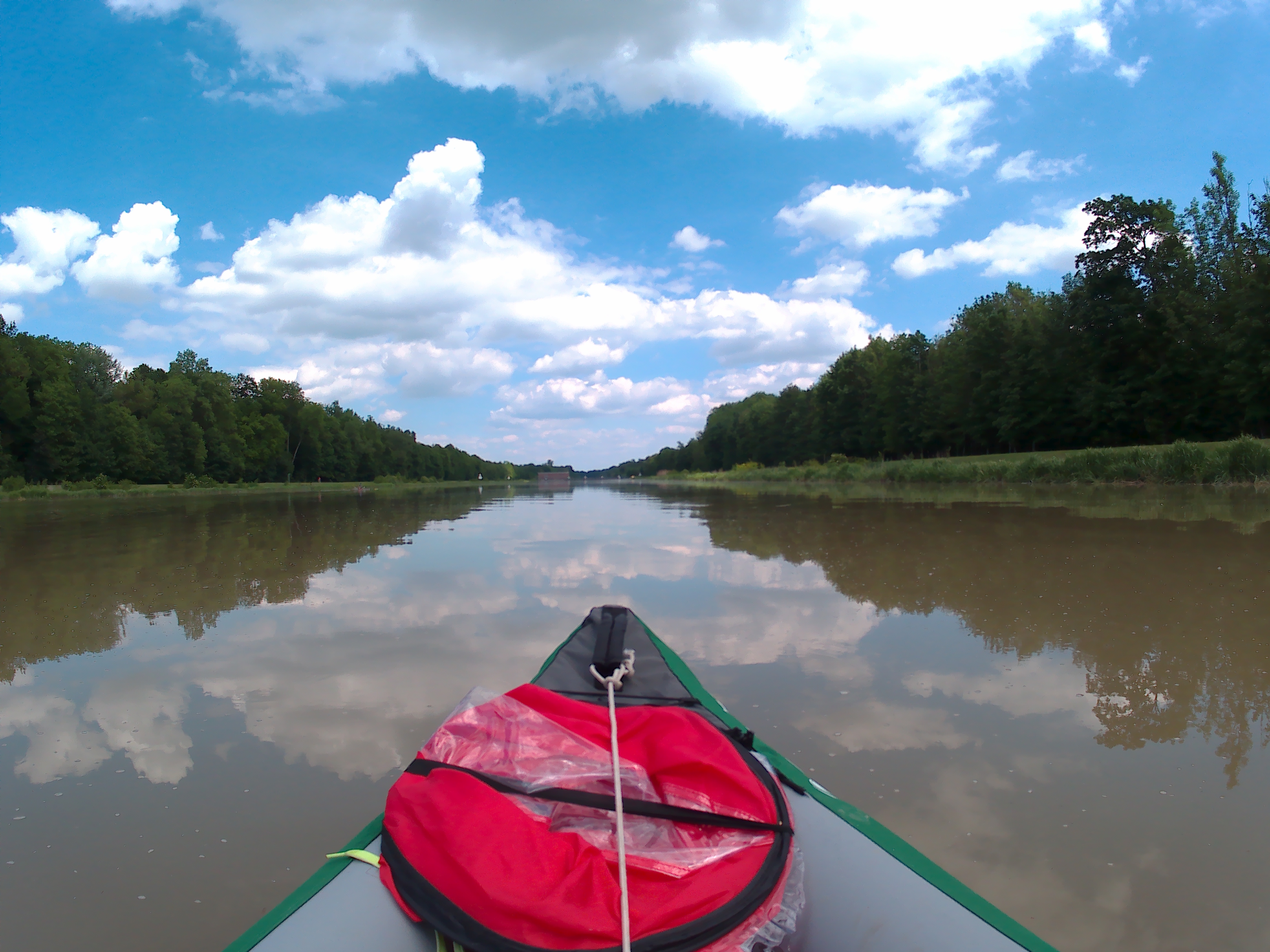


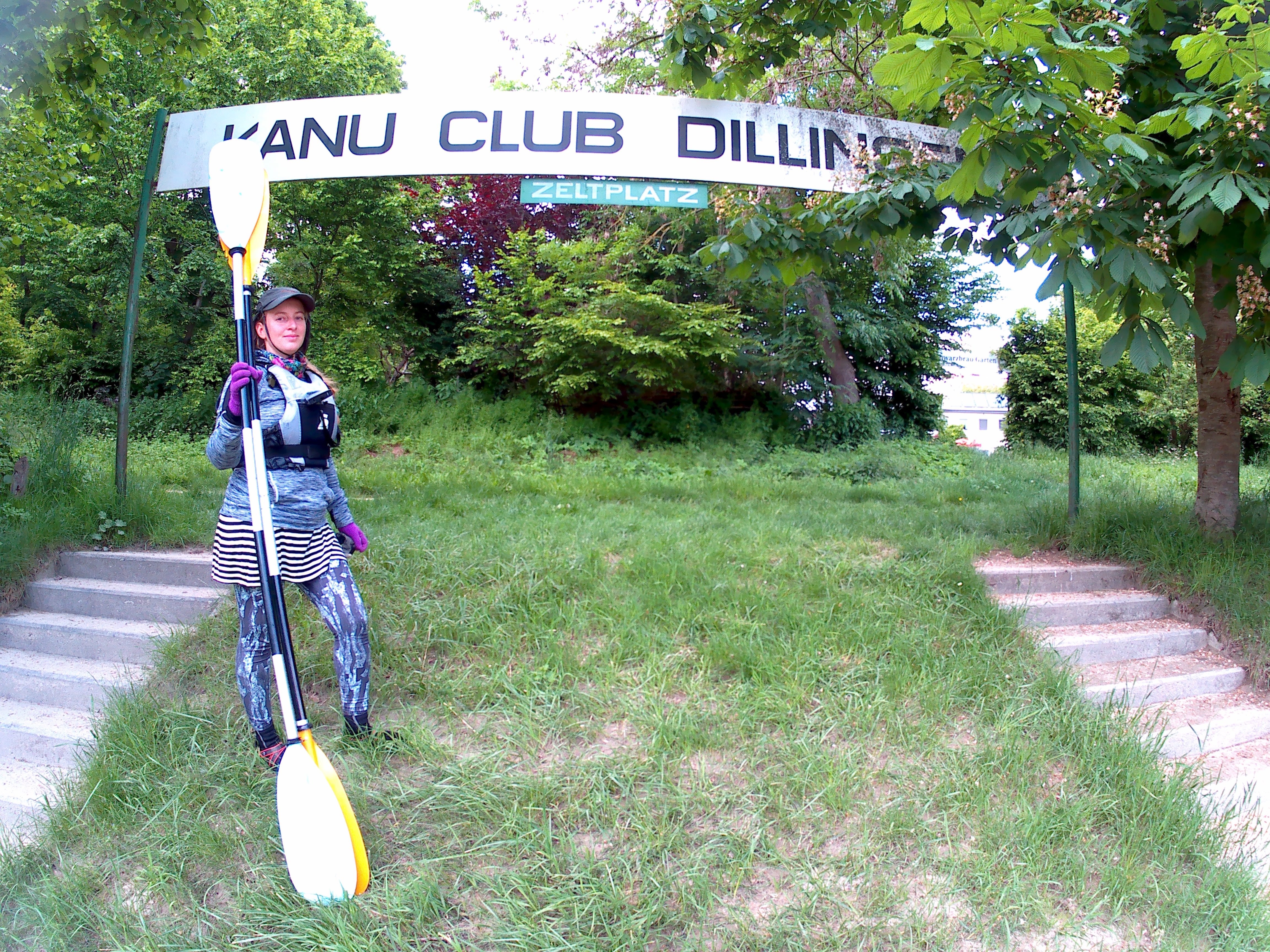
Checking in to Campsite Dillingen an der Donau
We found a spot on the campsite some 50 meters from the shore. Jonas checked us in for the night (€14.70). We pitched the tent, inflated the mattresses, and put everything inside within the hour. Our kayak stayed inflated next to our tent. By 16:00, we were enjoying a big Hefeweizen at the beer garden attached to the campsite. Soon our Käsespatzle and Currywurst arrived for refueling purposes. It was quite a successful day for us on the Danube.
Lots of people at the Dillingen campsite reacted very positively to our canoe. They asked us where we paddled from and where we were paddling to. Budapest shocked many of them, even though my guess is that many of them were cycling a similar distance, judging by their gear.
Campsite Dillingen also had quite excellent WiFi. Yes, you had to navigate through an abominable amount of menus to connect, but it was strong and reached our tent. We called a few hotels in Donauwörth – our next destination – which were all fully booked. Then we booked our joker hotel via Booking.com for two nights. After camping and paddling so much, we’d need the time and space to get some work done again.
We wanted to go to the nearest Lidl to get some more food to cook on our camp stove at night, but we realized it would be closed because of the damn public holiday. The camping was completely full of people with camper vans and caravans. Those big rig people started to annex the designated site for tent people like us and the many cyclists. We enjoyed another beer in the evening before brushing teeth and heading off to sleep. Tomorrow we’d paddle on to Donauwörth, a record-breaking 28 kilometers away.
Enjoyed this Story? Please Share it on Social Media
